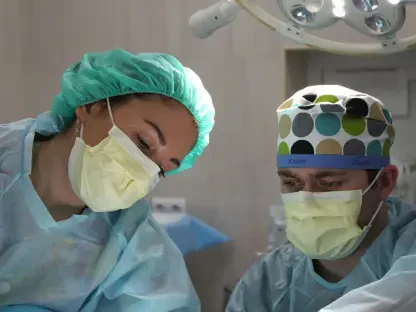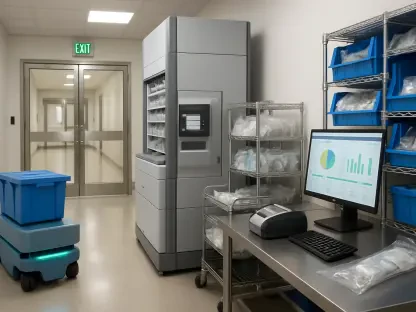The global market for Foley catheters is on an impressive growth trajectory, with projections indicating an expansion from USD 2,043.0 million in 2025 to USD 4,125.5 million by 2035. This remarkable growth, reflecting a compound annual growth rate (CAGR) of 7.6%, is a testament to the increasing importance of Foley catheters in the realm of healthcare. These essential medical devices, designed to manage urine retention and incontinence, are extensively utilized in hospitals, ICUs, post-surgical recovery units, and long-term care facilities, underscoring their critical role in patient care and recovery.
Key Market Drivers
Two significant catalysts driving the growth of the Foley catheters market are the increase in the global elderly population and the rising prevalence of chronic diseases. Conditions such as diabetes, cancer, neurological disorders, and various urological conditions necessitate the use of long-term catheterization solutions, substantially boosting the demand for Foley catheters. As the population ages, the need for effective management of these chronic conditions becomes paramount, making Foley catheters indispensable in both acute and long-term care settings. This demographic shift towards an older population underscores the sustained demand and market growth for these medical devices.
The rising incidence of urological disorders, including urinary incontinence and kidney stones, further propels the need for Foley catheters. These conditions often require effective management solutions and post-surgical recovery tools, with Foley catheters playing a crucial role in both scenarios. The increasing prevalence of these disorders emphasizes the importance of Foley catheters in providing necessary medical interventions, thereby fueling market demand. This trend is particularly notable in regions with aging populations and higher incidences of chronic urological conditions, highlighting the global relevance of these medical devices.
Technological Innovations
Technological advancements in catheter materials and design have significantly impacted the Foley catheters market, leading to enhanced patient comfort and reduced infection risks. Innovations such as silicone-based and antimicrobial-coated catheters are at the forefront of this technological transformation, aiming to improve patient outcomes and safety. These advanced materials are designed to minimize discomfort and lower the incidence of catheter-associated urinary tract infections (CAUTIs), which is a critical concern in healthcare settings. The ongoing development of these technologies underscores the commitment to improving patient care and expanding the market for Foley catheters.
Minimally invasive surgeries have also contributed to the increased use of Foley catheters, as these devices are often employed during and after these procedures. The rise of minimally invasive techniques in surgical settings necessitates reliable and efficient catheterization solutions, further driving the demand for Foley catheters. The integration of advanced materials and anti-infective coatings in these devices is expected to boost patient safety and drive future market expansion. This trend highlights the importance of continued innovation in catheter design and materials to meet the evolving needs of both patients and healthcare providers.
Market Segmentation
The Foley catheters market is segmented by product type, with the primary categories including 2-way, 3-way, and 4-way catheters. Among these, 2-way Foley catheters dominate the market, experiencing robust year-on-year growth of 7.8% over 2024. This segment’s dominance is attributed to its widespread use and versatility in various medical settings, making it a preferred choice among healthcare providers. Other product segments include catheter materials (latex, silicone, and other materials), indications (urinary incontinence, urethral stricture, chronic obstruction, neurogenic bladder, enlarged prostate gland/BPH, prostate cancer, and other indications), and end-users (hospitals, long-term care facilities, and ambulatory surgical centers).
Geographically, the market spans North America, Latin America, East Asia, South Asia & Pacific, Western Europe, Eastern Europe, and the Middle East and Africa, reflecting a comprehensive analysis of global trends. Each region represents a unique set of market dynamics, influenced by factors such as healthcare infrastructure, prevalence of chronic diseases, and demographic trends. The diverse geographical segmentation underscores the global relevance and demand for Foley catheters, highlighting the importance of understanding regional market nuances to effectively address the needs of different populations.
Challenges and Regulatory Landscape
Despite technological advancements in catheter design and materials, catheter-associated urinary tract infections (CAUTIs) remain a significant challenge in the healthcare industry. Ongoing improvements in antimicrobial technologies are vital to address these issues and enhance patient safety. The need for continuous innovation in catheter technology to prevent infections is paramount, as CAUTIs pose serious health risks and can lead to increased healthcare costs. This challenge underscores the importance of investing in research and development to create more effective antimicrobial solutions and improve overall patient outcomes.
Evolving healthcare regulations present additional challenges for manufacturers, requiring rigorous compliance to ensure the safety and efficacy of Foley catheters. Navigating these regulatory landscapes effectively is crucial for maintaining product standards and market presence. The stringent regulatory environment necessitates that market players stay abreast of changes in healthcare policies and standards to ensure their products meet the required criteria. This focus on regulatory compliance underscores the importance of quality assurance and adherence to best practices in product development and manufacturing.
Key Market Players
The global Foley catheter market is experiencing notable growth, with projections suggesting an increase from USD 2,043.0 million in 2025 to USD 4,125.5 million by 2035. This extraordinary expansion, representing a compound annual growth rate (CAGR) of 7.6%, highlights the growing importance of Foley catheters in the healthcare sector. These crucial medical devices, designed to manage urine retention and incontinence, are widely used in various healthcare settings, including hospitals, intensive care units (ICUs), post-surgical recovery units, and long-term care facilities. The significant role that Foley catheters play in patient care and recovery can be attributed to their efficiency in helping patients manage urinary issues, thereby improving their quality of life and aiding in quicker recoveries. This surge in demand underscores the critical contribution of Foley catheters to medical treatment and patient well-being, making them indispensable in modern healthcare practices.









